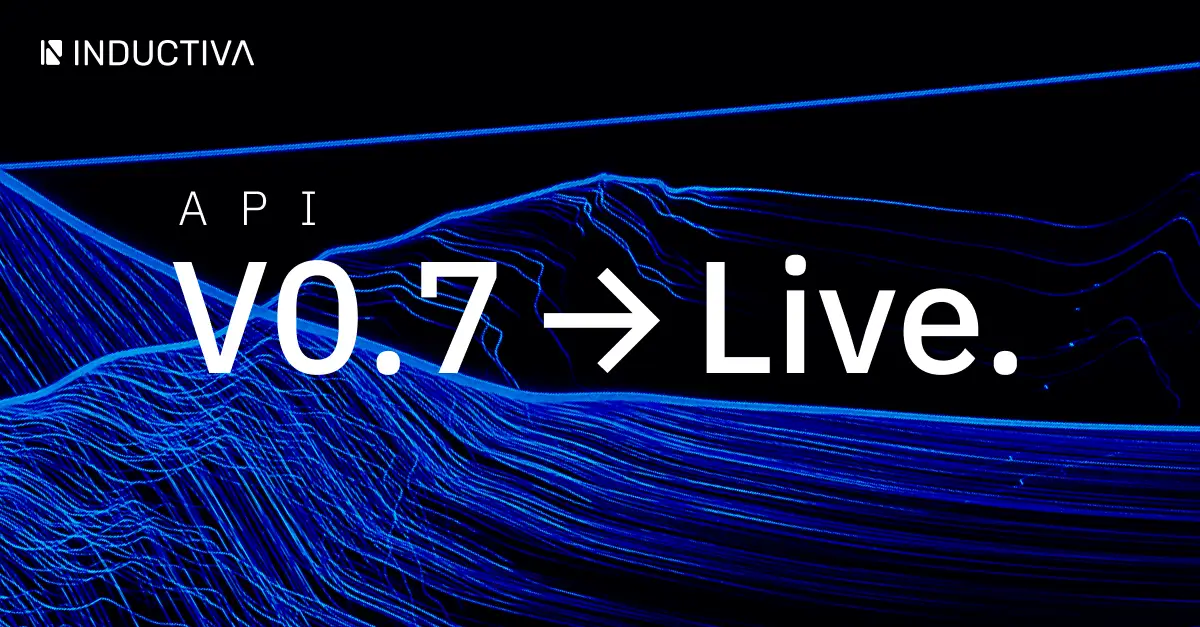Release v0.7 is a particularly special release for Inductiva, and it is one that the team is very proud of. This release marks an important transition in our product development journey because v0.7 is the first one where the vast majority of the work we developed was for addressing the great feedback we have been receiving from our users.
This is very significant for Inductiva because it shows that the API has reached a high-enough level of maturity and stability to consistently run challenging use cases on a number of different simulators – and we now have the chance to focus on improving its usability to make the whole user experience not only more efficient but also more enjoyable.
So, what’s new?
This v0.7 release brings numerous usability improvements for our users. We have worked on three main aspects:
- Transparency: Users now have much more information about all the steps being executed by the API, from what happens on their local machine to what happens on our servers, cloud machines and back to their local machine.
- Quantification: we now provide statistics on many aspects of the computational process, including the time spent at each stage, amount of data produced, the quotas available and being used, etc.
- Cost-saving advice: we have introduced additional information on how certain options affect computing costs. We hope that this realtime advice will help users select the best hardware that they need to run their simulations while rationalizing costs.
Some of the specific usability features brought in this release that we would like to highlight (among many others) are:
- The new
Task.print_summary()method provides users with a number of stats related to the different stages of the simulations, as well as to the data produced. - New disk space alerts, so that users know that the reasons why a simulation failed is due to lack of disk space in the cloud machine. This was a very common issue that was affecting our users, now that they are running much larger simulations.
- Information about the available user quota is displayed more often.
- Standard streams (stderr for errors and stdout for output) are now automatically downloaded during the execution of task.wait(), so that they can be immediately accessed even if the task fails.
- Information about the number of tasks waiting in the queue is now provided when the users submit their task, and is updated regularly.
Also, several improvements were made to our Command Line Interface (CLI):
- Additional options to access logs.
- Improved messaging, whenever the user tries to access a task that they don’t own or that doesn’t exist.
- The terminate all active computational resources command is now much faster.
- Also, we are now making available a mechanism for grouping tasks under a single addressable concept called Projects. This is especially useful when the user needs to run several simulations under a single context (“a project”), such as when exploring variations of a certain simulation use-case, or when needing to generate datasets of synthetic data.
To see the full list of features included in this version, check the complete release notes on our GitHub page.
What else is new since the last version?
We have added one more simulator to our portfolio: AMR-Wind. AMR-Wind is a parallel, block-structured adaptive-mesh solver tailored for simulating incompressible flows in wind turbines and wind farms. We’re currently operating on AMR-Wind version 1.4.0 for CPU, with a GPU version slated for release in the near future.
We expanded the number of use cases we are benchmarking, including larger-scale cases for even more simulators. We hope our official benchmarks site helps our users understand how important it is for them to find the optimal cost/performance point for their own use cases.
What’s coming next?
In general, for the next release we will continue to double down on the feedback we receive from our users, especially in the area of usability. We are committed to creating a truly delightful experience for our users: developing large-scale simulation projects does not need to be difficult, boring or frustrating. We will continue improving our messaging, and adding features that make it easier to interact with the platform and speed up the iteration process.
Also, because we understand that the cost/performance relation of a specific simulation use case is non-trivial, we are preparing benchmarking functionalities that users can invoke on their own use cases.
And now: Go Genesis!!
We recently launched Genesis, our early stage program designed for users from academia and R&D Labs. By registering to Genesis, users will have access to 1500 USD of credit to use on our API for a period of 30 days. There is really no excuse not to GO BIG!
Go to https://console.inductiva.ai and simulate a lot!



